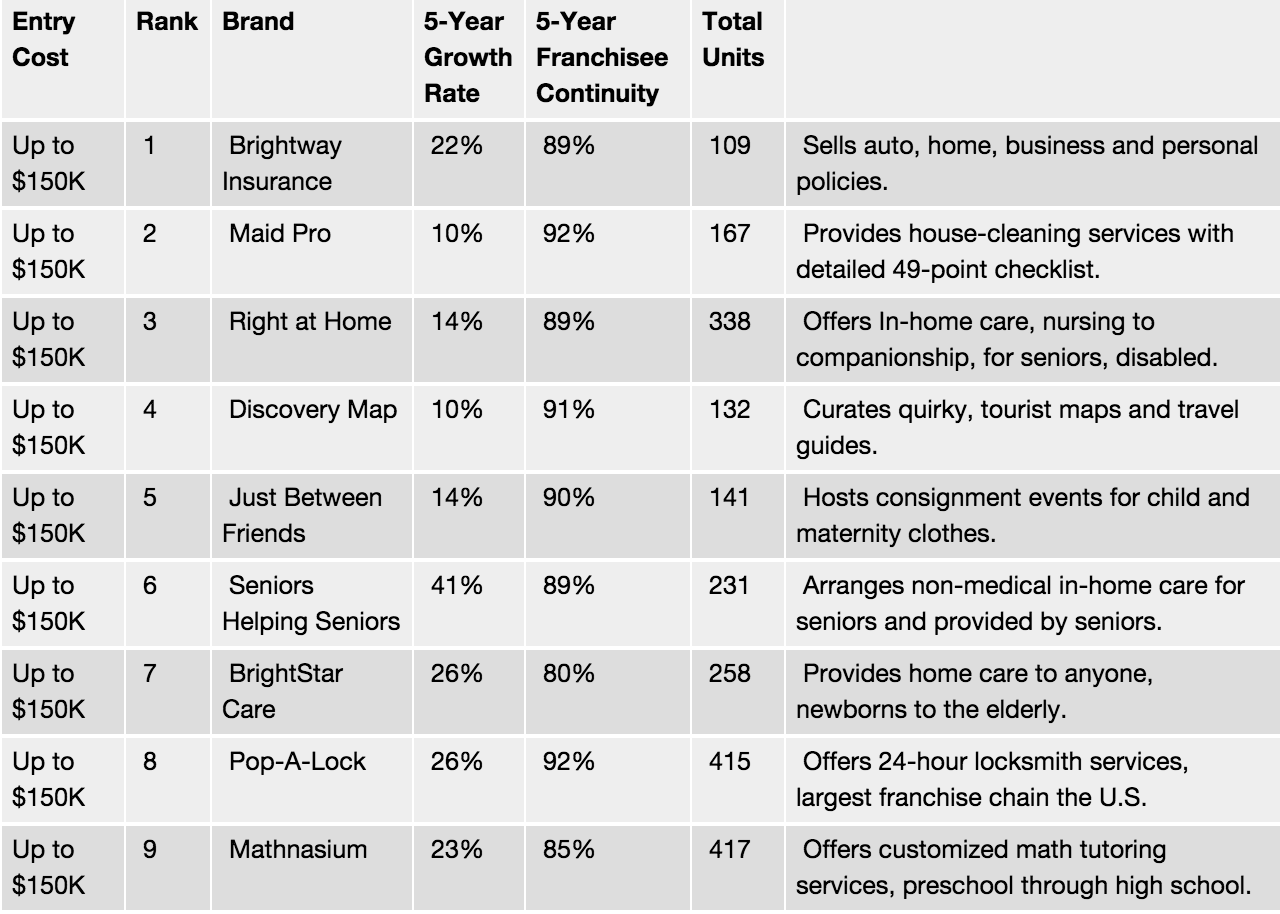Navigate quickly
Why I Have an Issue with the Forbes Franchise Rankings
I think that franchise rankings are an awesome tool for helping potential franchisees find which franchises are good for them and which aren’t. They’re also super useful for helping existing franchises get a benchmark for how they’re doing relative to their competition. So I was excited when I saw that Forbes had posted a ranking of the best franchises to buy (and the worst, but I was less interested in that). But when I first read through the rankings I was pretty thrown by them. Not necessarily by the ranking results themselves, but rather by the lack of an obviously transparent methodology behind the rankings. The “full list” page listed only 6 things for each franchise - their name, their investment category (one of three levels of investments they broke all franchises into), their 5-Year Growth Rate, 5-Year Franchise Continuity, Total Units, & their overall rank. I looked at those and understood what each section meant in a bubble, but didn’t understand what they meant collectively or how they more broadly fit together to lead to these rankings.
Inconsistent Rankings
The 5-Year Growth Rate and 5-Year Franchise Continuity are both great independent metrics of how a franchise is doing on average. As a potential franchisee both of these statistics are vital for selecting a franchise - you want to select a franchise that will provide you with a high return on investment and which will survive in the long run. I think these are, as FRANdata and Forbes suggested, two of the biggest (if not the two biggest) and most obvious metrics for whether or not a franchise is a “good” opportunity for a franchisee. But how do you use these to determine which franchise is BEST? This is the fundamental difficulty in coming up with a ranking system - it isn’t the difficulty in separating the good from the meh from the bad - it’s separating the great from the good and the best from the great. In the case of these rankings I found it to be pretty difficult to comprehend how they differentiated between the top ranked franchises. For instance, if you look at the difference between Discover Map (Forbes #4), Just Between Friends (Forbes #5), & Seniors Helping Seniors (Forbes #6) they all have extremely close continuity ratings and substantially different growth rates. In fact, in the case of these three, the overall rankings are opposite the growth rate rankings. Seniors Helping Seniors is ranked at the bottom of these three franchises despite having a growth rate that is 31 percentage points higher than Discovery Map and a continuity that is only 2 percentage points lower. This suggested to me that continuity was viewed as the dominant factor. But that logic didn’t hold for the rest on the “Economy Class” Top 10, as BrightStar Care (Forbes #7) had the same growth rate as Pop-a-Lock (Forbes #8) but a continuity rate that was 12 percentage points lower. These comparisons show that these were not the only two factors that went into the rankings, which is understandable, but no other factors that are explicitly listed in their results seem to be major factors.

How Forbes Explains It
Thankfully FRANdata and Forbes seem to be aware that people might be interested in their methodology and Edith Wiseman, the president of FRANdata, wrote an article talking about how franchises were ranked. There were a number of other factors that came into play ranging from financing program availability to franchise support. These factors appear to play a critical role in determining what the overall rankings were, and while they are mentioned in the methodology discussion they are never explicitly listed or shown how they were quantified. Financing a franchise is a critical factor to a number of franchisees and it should go into the ranking methodology, but franchisees can’t benefit from knowing this information if it isn’t listed in the reported rankings. For all a potential franchisee might know a franchise might have a great growth rate but the franchise might be very hard to obtain financing for, which could make the franchisee change their mind about the franchise.
Going Forward
I love what Forbes is trying to do in creating these rankings, both to help franchisees by providing better information and to help franchisors by giving them an idea of how they stack up against the competition. But, I feel like the public facing side of these rankings are lacking in enough detailed information that I’m sure was included in the actual analysis. If they expanded the details on each franchise to include the rest of the information they used (or at least a few more categories) than I feel like the rankings would be a much more useful tool.
Interested in opening a franchise of your own? Take our free franchise matching quiz and find the perfect fit for you!
Have an idea for something you'd see on our blog? Shoot me an email at tim@franchisehelp.com
Ultimate franchising guide
All you need to know as a first time franchisee: Step by step guidance from experienced franchise professionals.
















